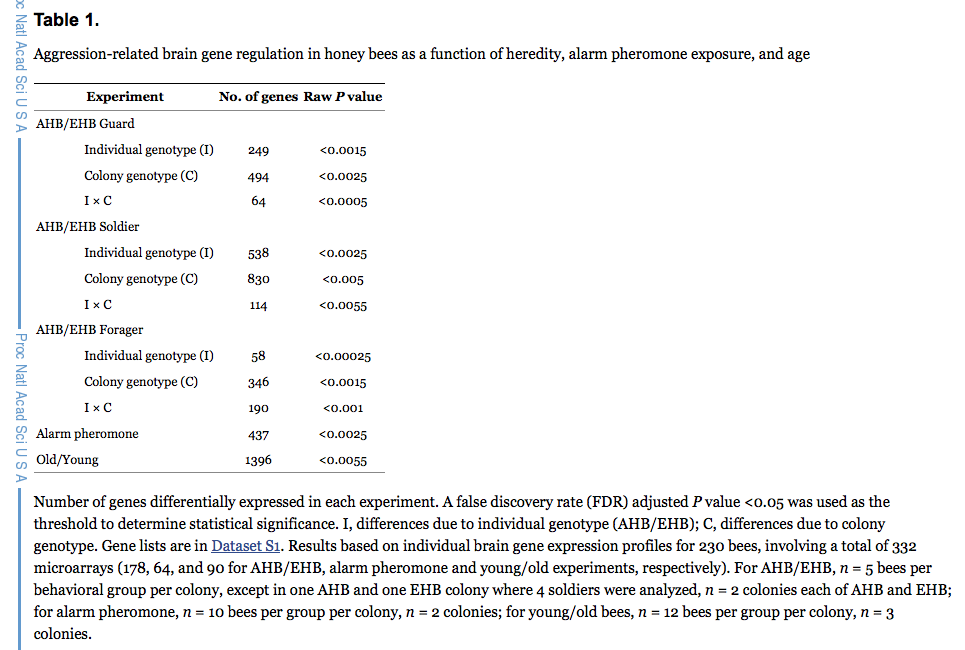Honey Bee Agression
Biology 342 Fall 2012
Tess Myers
What makes bees all uppity?
The causes of variation in bee colony aggression levels
As we know, bees can go swiftly from the fuzzy and cute "bumble" bees that we see buzzing around flowers, to an angry stinging foe. It's easy to understand how one bee gets aggressive, but how does the whole colony know to attack? It turns out that there is a chemical pheromone signal called isopentyl acetate that bees use as an alarm signal- when a bee is disturbed, it releases a little puff of this pheromone, which alerts the surrounding bees to the alarm, and causes them to likewise release more alarm signal. This quickly cascades into a full-on colony wide alert, sometimes even extending to neighboring bees from other colonies.
A variety of factors will affect the aggression levels within an individual colony or single bee. According to Honey Bee Suite, a website dedicated to information about bees and beekeepers, influences ranging from environmental to human will heighten the aggressive response in domestic bees. A shortage of nectar producing flowers can lead to robbing of other hives, thereby putting neighboring hives on their guard. Because an attack from another hive will lead to fighting, and therefore the release of alarm pheromone, this behavior can easily escalate. Other impingements on the hive, such as animal intrusion and regular beekeeper visits, can lead to heightened hostility.
A team of researchers in 2009 looked at the regulation of genes that are affected by exposure to alarm pheremon. among other experiments, thay looked at gene expression in the brains of old and young bees who had been exposed to alarm pheromone, thereby providing valuable insight into the lifetime effects of alarm pheremone on EHB's.
It turns out that the alarm pheromone causes not only an instantaneous aggressive response, but also may cause long-term sensitization in bees. The researchers looked at the expression of an immediate early gene and the transcription factor c-Jun in the antennal lobes, and saw that it was significantly unregulated 1 hour after exposure to alarm pheromone. The researchers suspect that this is related to long-term sensitization, which would help explain why older bees are faster and more aggressive to respond. (Alaux et al, 2009)
